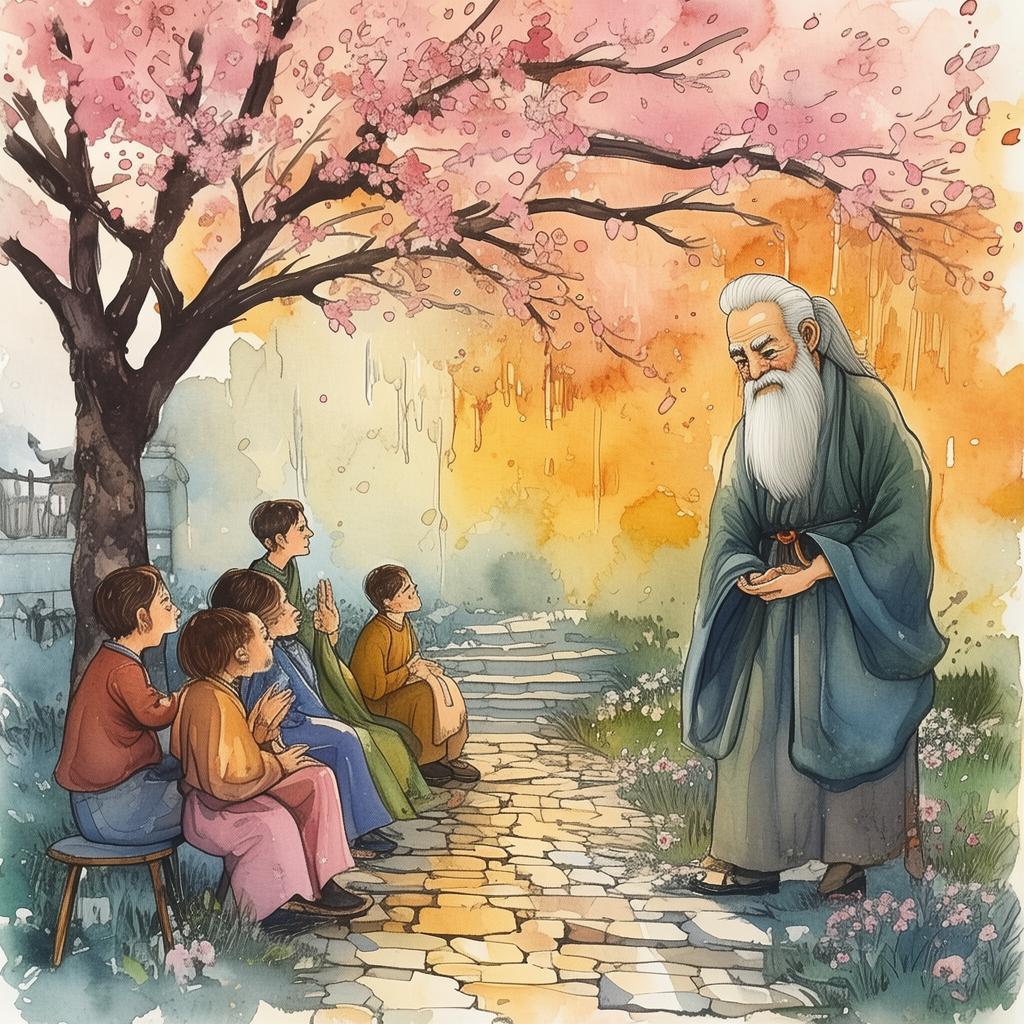The Shadowed Canvas: A Gothic Painter's Dilemma
In the heart of a fog-shrouded Gothic town, there lived an artist named Eadward, known for his hauntingly beautiful paintings that seemed to capture the very essence of the dark and eerie. His latest work, a painting titled "The Shadowed Canvas," had become the talk of the town. It was a portrait of a woman, her eyes filled with sorrow, and her form shrouded in a cloak of darkness. The townsfolk whispered about the painting, claiming it was cursed, but Eadward dismissed their fears, believing it was his finest creation.
Eadward's obsession with his art was not just a hobby; it was a driving force in his life. He spent every waking hour in his dimly lit studio, surrounded by the scent of linseed oil and the quiet hum of his brushes against the canvas. "The Shadowed Canvas" was his magnum opus, the culmination of years of practice and study of the Gothic grandeur that he so deeply admired.
One evening, as the last rays of the setting sun cast a melancholic glow through the window, Eadward found himself standing before his painting. He felt a strange connection to the woman in the portrait, as if her sorrow was his own. He couldn't shake the feeling that she was calling out to him, imploring him to understand her pain.
The next morning, Eadward's life took an unexpected turn. A woman named Isabella knocked on his door, her eyes wide with fear and her face pale with exhaustion. She introduced herself as the subject of "The Shadowed Canvas" and explained that she had been searching for him for years. She claimed that the painting had been stolen from her family home, and she was desperate to reclaim it.
Eadward was taken aback by her story. He had no memory of meeting Isabella or painting her portrait. Yet, there was something about her that felt familiar, as if she was a part of his own past. As Isabella spoke, Eadward couldn't help but notice that her eyes held the same sorrow as the woman in his painting.
The mystery deepened when Isabella revealed that her family had been the victims of a tragic accident, and she believed that the painting held the key to solving the mystery of their deaths. The more Isabella spoke, the more Eadward felt drawn to help her. He decided to investigate the circumstances surrounding her family's death and the origins of the painting.
As Eadward delved deeper into the case, he discovered that his own past was intertwined with Isabella's. It turned out that he had painted the portrait as a young artist, unaware of the true story behind the woman's sorrow. The painting had been a reflection of his own grief, a tribute to the woman he had loved and lost.
The revelation brought Eadward to a crossroads. He had to choose between his art and his life. On one hand, he had a chance to uncover the truth behind the tragedy and perhaps bring closure to Isabella's family. On the other hand, he had a chance to continue his career as an artist, creating works that would be remembered for generations.
The decision was not easy. Eadward was torn between his passion for art and his newfound connection to Isabella. He knew that if he pursued the truth, he would have to confront the darkest parts of his own past. But he also knew that he couldn't live with the knowledge that he had contributed to Isabella's suffering.
In the end, Eadward chose to follow the path of truth. He and Isabella embarked on a journey to uncover the truth behind the painting and her family's death. Along the way, they encountered old friends, enemies, and unexpected allies, all of whom had a stake in the outcome of their quest.

The climax of their journey came when they discovered that the painting had been a decoy, a means to divert attention from the real criminal. The revelation was shocking, and it forced Eadward to confront the fact that he had been part of a much larger conspiracy.
In the end, Eadward and Isabella were able to bring the real criminal to justice, and Isabella's family received the closure they had been searching for. The experience had changed Eadward's perspective on art and life. He realized that the true power of his art lay not just in its beauty, but in its ability to tell stories and bring people together.
With a newfound sense of purpose, Eadward returned to his studio, ready to create a new chapter in his life and his art. He painted "The Shadowed Canvas" once more, but this time, the woman's eyes were filled with hope, not sorrow. It was a testament to the journey he had undertaken and the lessons he had learned.
The story of Eadward and Isabella spread throughout the town, and "The Shadowed Canvas" became more than just a painting; it became a symbol of hope and redemption. Eadward's decision to choose truth over obscurity had not only brought closure to Isabella's family but had also given him a new lease on life.
And so, the Gothic painter's obsession with his art had led him to a path of self-discovery and redemption, proving that even in the darkest of times, the light of truth can shine through.
✨ Original Statement ✨
All articles published on this website (including but not limited to text, images, videos, and other content) are original or authorized for reposting and are protected by relevant laws. Without the explicit written permission of this website, no individual or organization may copy, modify, repost, or use the content for commercial purposes.
If you need to quote or cooperate, please contact this site for authorization. We reserve the right to pursue legal responsibility for any unauthorized use.
Hereby declared.









